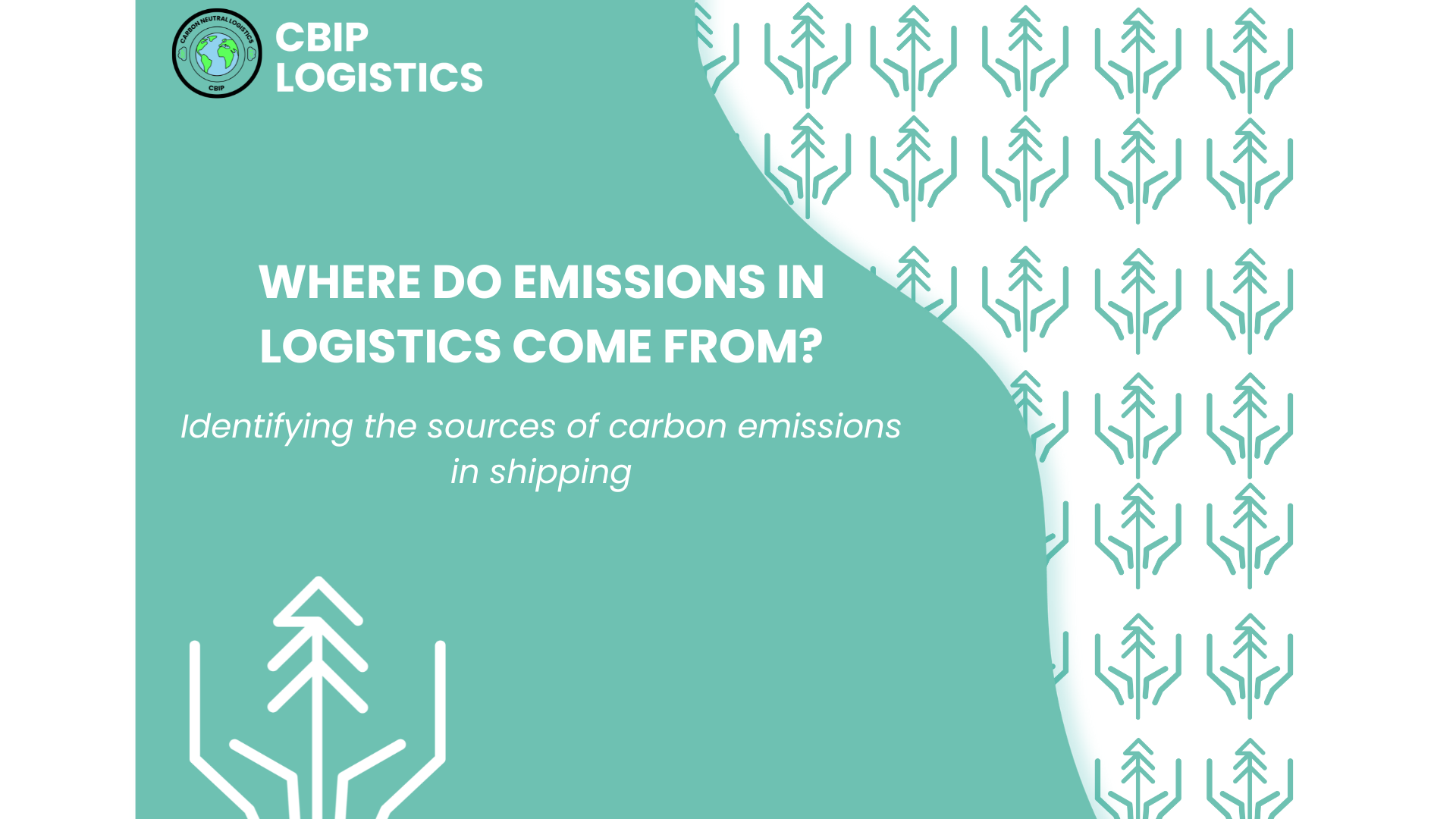Where Do Emissions in Logistics Come From?

The logistics industry plays a vital role, moving everyday goods from factories and farms to offices, stores, and homes around the world. Despite all the good it does, it unfortunately comes with a pretty hefty carbon footprint.
Greenhouse gas emissions in logistics mainly come from freight transportation, warehouses, and business operations.
Here’s the breakdown.
Read About CBIP’s Global 4PL Logistics Services
Freight transportation
According to the United Nations
, about 25% of global carbon emissions come from transportation. Since 95% of transportation is powered by fossil fuels, the emissions in this sector are high. The expansion of e-commerce and global trade markets keeps demand for freight and transportation services high.Planes, trains, trucks, and ocean vessels emit different amounts of carbon per ton-mile traveled. Air is the most emissions-intensive mode of transportation by far.
Here’s the breakdown, according to the US Congressional Budget Office:
- Air transport: 2.57 pounds of carbon emissions per ton-mile.
- Truck: 0.4 pounds of emissions per ton-mile.
- Water: 0.13 pounds of emissions per ton-mile.
- Rail: 0.05 pounds of emissions per ton-mile.
Opportunities for improvement
Since freight transportation relies heavily on fossil fuels and requires large upfront capital investments to lower emissions, it’s difficult to find areas where it’s possible to cut back on consumption.
The best way to lower emissions in freight is for companies to invest in more sustainable fuels, such as electric, hydrogen, biofuels, or renewable natural gas.
Thankfully, governments and organizations are working to lower costs and increase financial incentives for using more sustainably-powered vehicles. As more eco-friendly freight transport becomes more affordable, it is also becoming more prevalent in the logistics world.
RELATED: Why Did CBIP Become Carbon Neutral and Go For The Green?
Warehouses
Operating a warehouse can require large amounts of electricity. Heating and cooling alone take up vast amounts of electricity, particularly since warehouse doors are constantly opening and closing, making them not very energy-efficient.
The problem is even worse with refrigerated warehouses, which typically require four times the electricity of a regular warehouse.
Depending on what the warehouse is used for, it can generate excessive waste that needs to be disposed of. Food waste emits methane gas when it decomposes in a landfill, which is 30x more warming to the climate than carbon dioxide.
Opportunities for improvement
Making small changes can be very effective for lowering bills and becoming more eco-friendly. For instance, you may be surprised to learn how much changing the lights from incandescent bulbs to LEDs can impact a warehouse’s emissions and utility bill.
Companies can also invest in renewable energy, efficient HV/AC systems, and LED lighting to lower carbon emissions that come from warehouses.
Company operations
Offices require computers, printers, paper, chairs, desks, electricity, heating, cooling, and employees who commute from home. Each one of these aspects contributes to GHG emissions.
Electricity, heating, cooling, and employee commutes are also responsible for carbon emissions because they rely on energy largely sourced from fossil fuels.
Opportunities for improvement
Operational emissions vary greatly depending on the company. However, no matter how small or large your business is, you can make a difference by integrating sustainable practices into the model of your business.
Companies can implement recycling/composting campaigns, work-from-home policies, and renewable energy and efficiency projects to lower operational emissions. Providing public transportation passes and/or bike racks on-site can help reduce emissions from commuting.
Your number one opportunity for improvement? Working with a logistics provider committed to greener logistics
Carbon emissions come from many sources in the logistics industry, which can seem daunting. However, this also means there are many different opportunities to lower emissions and make a difference.
As a global 4PL provider for e-commerce retailers, we at CBIP Logistics have many remote employees and do not directly produce any goods. We see our lack of direct impact as an opportunity to help our retail and logistics partners to lower their emissions.
At CBIP, we have invested in various sustainable accounting methods for the future, including collaborating with sustainability partner South Pole, which helps us track emissions throughout our network of partners and gives us ideas on how to reduce and/or offset those emissions.
When it comes to sustainable logistics, the industry has a long way to go. If you are interested in joining forces with a logistics provider that’s investing for a greener future, we’d love to hear from you. Reach out today for a free logistics consultation.
Additionally, if you are interested in seeing how we keep ourselves accountable for our emissions, check out our sustainability page, where you can download and read our sustainability report for free.






